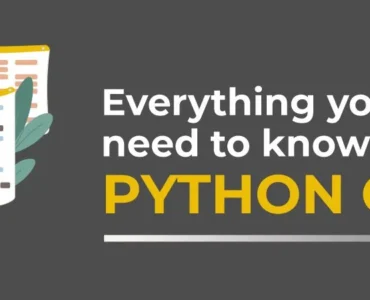PowerPoint presentations are essential tools in education, business, and various professional settings. They allow individuals to present complex ideas visually, engaging audiences through slides filled with information, images, and other multimedia content. However, with the growing prevalence of online resources and the ease of copying and pasting content, the risk of plagiarism in PowerPoint presentations has increased significantly. This blog will explore how plagiarism checkers work in PowerPoint and how plagiarism checker PowerPoint free online.
Understanding Plagiarism in PowerPoint
Plagiarism in PowerPoint occurs when someone uses another person’s content, ideas, or work without proper attribution. This could include copying text, images, charts, or other visual elements from various sources without providing credit to the original creators. Such practices can lead to academic dishonesty, legal repercussions, or damaged reputations. It is crucial for individuals creating PowerPoint presentations to understand the importance of originality and the risks of plagiarism.
The Role of Plagiarism Checkers in PowerPoint
Plagiarism checkers are tools designed to detect copied or unoriginal content in a given work. While they are commonly used for written assignments, these tools have evolved to check other formats, including PowerPoint presentations. These checkers work by comparing the content of a PowerPoint presentation against a vast database of online resources, academic papers, books, and other publications.
When using a plagiarism checker for PowerPoint, the tool typically extracts text and other content from the slides and cross-references it with its database to identify similarities. If a significant match is found, the checker flags it as potential plagiarism, allowing the user to review and correct the issue.
When running a plagiarism checker on a PowerPoint presentation, the tool generally pulls text and other content from the slides and compares it against its database to detect similarities. If there’s a notable match, it flags it as possible plagiarism, enabling the user to review and resolve the issue.
Using a Plagiarism Checker for PowerPoint
The process of using a plagiarism checker for PowerPoint involves a few simple steps:
- Upload the Presentation: Most plagiarism checkers allow users to upload their PowerPoint presentations in formats like PPT or PPTX. This step is crucial to analyze the entire presentation for potential plagiarism.
- Content Scanning: After uploading the presentation, the plagiarism checker examines the content, including text, images, charts, and other components. It examines the content against its database to find matches or similarities.
- Reviewing the Results: After scanning, the checker generates a report highlighting areas with potential plagiarism. Users can examine these results to decide if appropriate attribution is provided or if the content requires revision.
- Correcting Plagiarism: If the report indicates plagiarism, the user must take steps to correct it. This could involve rewording content, adding citations, or replacing copied material with original work.
Free Plagiarism Checker for PowerPoint
Several free plagiarism checkers online are designed to work with various document formats, including PowerPoint presentations. These tools are especially useful for students, educators, and professionals seeking to maintain academic and professional integrity. Here are some popular free plagiarism checker that can be used to check PowerPoint presentations:
- Grammarly: While primarily known for its grammar and writing assistance, Grammarly offers plagiarism detection that can be used for PowerPoint presentations. It checks content against a vast online database to ensure originality.
- DupliChecker: DupliChecker is a free online plagiarism checker that allows users to upload PowerPoint presentations and other document formats. It scans the content for similarities and provides detailed reports.
- PlagScan: PlagScan offers free and paid versions of its plagiarism checker.
Plagiarism Facts and Assignment Help
Plagiarism facts highlight the prevalence of plagiarism and the need for effective prevention methods. According to studies, approximately 30% of university students admit to engaging in plagiarism at some point in their academic careers. This statistic underscores the importance of tools like plagiarism checkers to ensure originality and integrity in academic work.
Assignment help services, such as BookMyEssay, play a vital role in providing academic support and guidance to students. These services offer assistance with assignments, essays, and presentations, helping students understand the importance of originality and proper citation practices. By incorporating plagiarism checkers into their processes, assignment help services can ensure that students receive high-quality, plagiarism-free work.
Assignment help services like BookMyEssay are crucial in offering academic support and guidance to students. These services aid with assignments, essays, and presentations, emphasizing the significance of originality and correct citation methods. By using plagiarism checkers, these services can guarantee that students get top-quality, plagiarism-free work.
Preventing Plagiarism in PowerPoint Presentations
To prevent plagiarism in PowerPoint presentations, individuals should adopt best practices for originality and proper attribution. Here are some tips for preventing plagiarism in PowerPoint:
- Use Original Content: Whenever possible, create original content for your presentations. This reduces the risk of plagiarism and adds a unique touch to your work.
- Cite Sources: If you use content from external sources, such as quotes, images, or data, ensure proper citations. Include the source information on the slide or in the presentation notes.
- Reword Content: Instead of copying and pasting text, reword content to express ideas in your own words. This shows understanding and reduces the risk of plagiarism.
- Use Plagiarism Checkers: Before submitting or presenting your work, use a plagiarism checker to ensure it is free from copied content. This step is crucial for maintaining academic and professional integrity.
- Seek Assignment Help: If you need assistance with creating PowerPoint presentations, consider seeking help from assignment assistance services like BookMyEssay. These services can guide you through creating original and well-cited presentations.
In conclusion, plagiarism checkers are essential tools for maintaining originality and integrity in PowerPoint presentations. By using free online plagiarism checkers and following best practices, individuals can create engaging and original presentations without risking academic or professional repercussions. Incorporating these practices ensures that your PowerPoint presentations are both effective and ethically sound.
Plagiarism checkers are crucial for preserving originality and ethical integrity in PowerPoint presentations. As presentations play a key role in academic and professional settings, it’s important to ensure that they are free from copied content and proper attribution is maintained. Free online plagiarism checkers allow individuals to scan their presentations for any potential instances of plagiarism, providing an opportunity to correct them before they cause any issues.
When preparing a PowerPoint presentation, you typically combine text, images, charts, and other elements to create a compelling narrative. However, if these components are borrowed from other sources without proper citation, it could lead to academic or professional repercussions. By using a plagiarism checker, you can identify any content that might need proper attribution or reworking, allowing you to avoid unintentional plagiarism and ensure your work is original.
The benefits of utilizing plagiarism checkers extend beyond compliance. By adhering to best practices for citation and referencing, you create presentations that not only look professional but also demonstrate academic integrity and respect for intellectual property. These practices foster a culture of originality and can improve your credibility with professors, peers, or clients.




